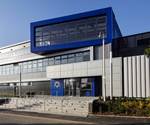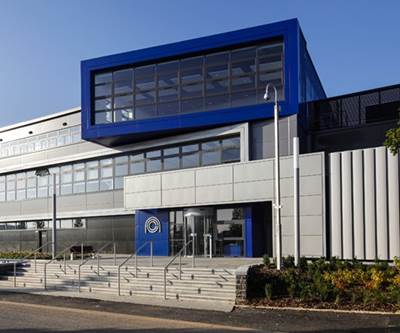NCC's new Large Scale Resin Infusion (LSRI) technology designed for aerospace, wind industry R&D
New Large Scale Resin Infusion (LSRI) technology is aimed at widening the applicability of Liquid Composite Molding (LCM) processes to a wider range of components.
The National Composites Centre (NCC, Bristol, U.K.) and Composite Integration Ltd. (Saltash, U.K.) on February 20 announced the successful completion of a year-long project to design and deliver a state-of-the-art Large Scale Resin Infusion (LSRI) technology. The system is designed to meet the R&D demands of both aerospace and wind industry manufacturing where components can range from 17 meters up to 120 meters in length.
The NCC identified the need to procure a Large Scale Resin Infusion (LSRI) capability as part of its iCAP Program, a £36.7m investment in ten digital manufacturing technologies being installed at the NCC to stimulate and support composites innovation, manufacturing and research development programs across a range of sectors.
The acquisition of the LSRI equipment from Composite Integration Ltd. will reportedly enable the NCC to widen the applicability of Liquid Composite Molding (LCM) processes — used to produce high integrity composite parts, without the need for an autoclave — to a wider range of components. Using LCM, fibers are first assembled dry into a mold, resin is then pumped into the fibers and drawn through under vacuum prior to being cured in an oven.
According to the NCC, the new capability offers a robust means of LSRI and is capable of injecting high resin volumes into a variety of preforms — primarily, but not limited to, using a vacuum-bagged setup. The modular machine has additional flexibility to process both single or two-part resin systems and will be teamed with a 20m oven to enable cure of those resins. Together they will create a step change in the production of high quality, high fiber volume fraction composite parts.
The NCC says the first application of the technology will be to enable infusion of complete wing components as part of next-generation wing technology developments.
According to the NCC, the data collected by the machine is a key component in its strategy for driving forwards innovation in technology and techniques to deliver Industry 4.0 for composites. The system is said to be capable of reacting to the data in real-time to iadapt the infusion parameters and ensure the mold is filled. As the NCC capability develops it says it will allow for machine learning to recommend infusion cycle improvements based on data acquired from previous infusion cycles.
“Our Large Scale Resin Infusion equipment is game-changing for large infusion projects and as part of the iCAP program takes us significantly closer to achieving our ambition of automating the infusion process to help reduce costs and production cycle times,” says Peter Giddings, chief engineer, iCAP at the NCC, “Whether you are manufacturing 18-meter long composite wings, boat hulls or bridges, the equipment and our team of experts is here to help you drive forward your emerging technology to industrial application.”
Simon Vincent, design and engineering manager at Composite Integration explains, “Processing aerospace grade epoxy resin systems at elevated temperatures brings with it a number of challenges. Although equipment exists on the market for processing smaller quantities of these resin systems, as the scale of Aerospace parts being manufactured using Liquid Resin Infusion has increased, there was an evident need to develop machinery capable of processing up to 400 kilograms of high-temperature epoxy resin. This is the first machine of its kind that can process this type of resin in batches larger than 50 kilograms.”
Related Content
Premier Composite Technologies, Sicomin support Holy Mosque Mataf extension project
The Grand Mosque’s 216,800-square-meter Mataf ceiling demonstrates the architectural possibilities when using composites.
Read MoreWoven UD fabric enhances scalable carbon fiber options for infrastructure
CAMX 2025: Zoltek introduces PX35 woven UD fabric which bridges the gap between performance and affordability for retrofit and new build scenarios.
Read MoreAward-winning Oder river bridge cuts 500 tons of steel with CFRP tension cables
Developed by Carbo-Link and tested by Empa, the Oder Bridge near Küstrin is a heavy rail bridge using 88 CFRP tension members, enabling 120 km/hr train speeds with reduced weight and emissions.
Read MoreBrainDrip scales up composite technology to meet current, future energy infrastructure needs
Next-generation composite pipe development with embedded, AI-enhanced health monitoring will modernize new and aging pipelines globally.
Read MoreRead Next
NCC and Surface Generation partner to demonstrate thermoplastic overmolding capabilities
The two companies together have produced a number of carbon fiber reinforced / PA6 automotive demonstrators which are due to be assessed by an automotive OEM.
Read MoreNext-gen fan blades: Hybrid twin RTM, printed sensors, laser shock disassembly
MORPHO project demonstrates blade with 20% faster RTM cure cycle, uses AI-based monitoring for improved maintenance/life cycle management and proves laser shock disassembly for recycling.
Read MoreCeramic matrix composites: Faster, cheaper, higher temperature
New players proliferate, increasing CMC materials and manufacturing capacity, novel processes and automation to meet demand for higher part volumes and performance.
Read More












